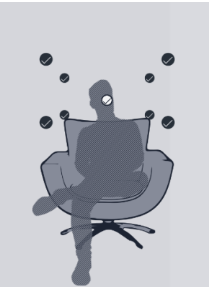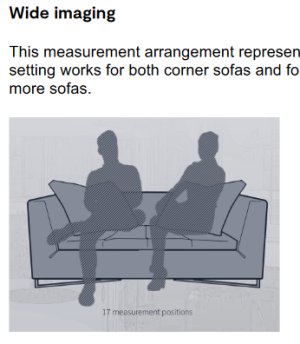The above was the very, very short version, so let me explain in more detail.
First of all I'm not using Dirac, I'm using RoomPerfect (RP). RP works by taking only
one measurement in the MLP. All other measurements are taken at totally random points in the room (not outside the listening space, though). The intention is to capture the room's characteristic, not to concentrate on the sweet spot. All I can say is that in daily use this is working very well. In addition, RP has two different main profiles, named "Focus" and "Global". Global puts even less emphasis on the sweet spot and more on what's perceived in the entire listening space. And if that still isn't enough for you, RP allows to add different "Focus" positions (for each MLP) any time. Brilliant!
When dealing with stuff not supporting RoomPerfect (read: anything that isn't Lyngdorf, Steinway Lyngdorf or McIntosh) I try to emulate a similar approach. I do measure in the MLP (mic pointing at the center between the speakers) and add as many room measurements (mic pointing 90° upwards) as I feel necessary, mainly interested in those measurements differing from the previous ones. I then average those measurements (adding the MLP measurements to the mix three or four times to give it some extra weight) and carefully apply some correction to address the defects visible in the result. So far, I've been very satisfied with the results.
I'll go as far as admitting that a good thick rug on the floor is always a good idea. Choose a listening space where moving youre head just a few inches won't result in totatlly different results. Place your speakers in a way that avoids early reflections disturbing your listening experience. I'm fine with all that. But that's about it.
That's been the practical part. Now on to some theory and philosophy. Bass traps are incredibly inefficient. Dampening and diffraction might be helpful for a glass and concrete hipster loft, but isn't really needed for the average living room. Music is not recored, mixed and mastered to be replayed in an unechoic chamber. The late famous swiss sound artist Jürg Jecklin (calling him a sound engineer would be wrong on too many levels)
gave a great lecture on the history of concert halls in 2015. Unfortunately, there is no English translation that I am aware of. I am not entitled to provide a summary, but I will take the freedom to elaborate on my own conclusions and how they can be applied to music reproduction: Our brain has a good concept of usualy rooms and it is well able to distiguish between the original sound event and the rooms contribution, if we give it a chance to do so.



